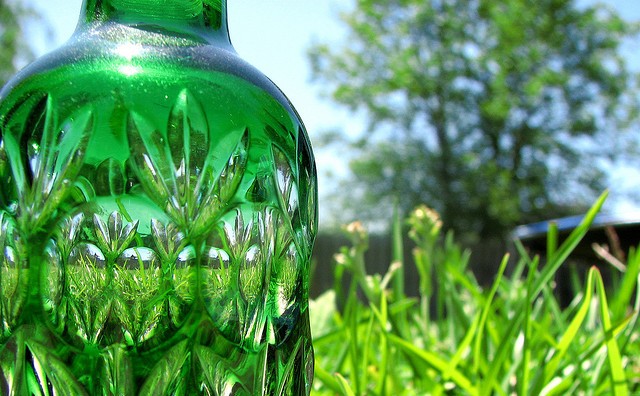Bioplastics are plastics gotten from renewable biomass
sources, for example, vegetable fats and oils, corn starch, or microbiota.
Bioplastic can be produced using farming repercussions furthermore from
utilized plastic jugs and different compartments utilizing microorganisms.
Basic plastics, for example, fossil-fuel plastics (additionally called Petro
based polymers), are gotten from petroleum or characteristic gas. Generation of
such plastics has a tendency to require more fossil powers and to deliver more
nursery gasses than the creation of biobased polymers (bioplastics). A few, yet
not all, bioplastics are intended to biodegrade. Biodegradable bioplastics can
separate in either anaerobic or oxygen consuming situations, contingent upon
how they are produced. Bioplastics can be made out of starches, cellulose,
biopolymers, and an assortment of different materials.
a natural material in which carbon is gotten from a renewable asset by means of
organic procedures. Biobased materials incorporate all plant and creature mass
got from CO2 as of late altered through photosynthesis, per the meaning of a
renewable asset.
Items available are produced using an assortment of characteristic feedstocks
including corn, potatoes, rice, tapioca, palm fiber, wood cellulose, wheat
fiber and bagasse. Items are accessible for an extensive variety of
utilizations, for example, mugs, bottles, cutlery, plates, snacks, bedding,
furniture, floor coverings, film, materials and bundling materials. In the US,
the rate of biobased fixings required for an item to be alluded to as biobased,
is characterized by the USDA on an item-by-item premise. ILSR has suggested
that the USDA set a base limit of 50 percent biobased content for items to be
considered biobased.
Sorts of Bioplastic :
Thermoplastic starch as of now speaks to the most broadly utilized bioplastic,
constituting around 50 percent of the bioplastics market.
Straightforward starch bioplastic can be made at home.Pure starch can
assimilate dampness, and is in this manner an appropriate material for the
creation of medication containers by the pharmaceutical division. Flexibility
and plasticizer, for example, sorbitol and glycerine can likewise be included
so the starch can likewise be prepared thermo-plastically. The qualities of the
subsequent bioplastic (likewise called "thermo-plastical starch") can
be custom-made to particular needs by modifying the measures of these added
substances.
Starch-based bioplastics are regularly mixed with biodegradable polyesters to
create starch/polycaprolactone starch/Ecole (polybutylene
adipate-co-terephthalate delivered by BASF. mixes. These mixes are utilized for
modern applications and are additionally compostable. Different makers, for
example, Roquette, have created other starch/polyolefin mixes. These mixes are
not biodegradable, but rather have a lower carbon impression than
petroleum-based plastics utilized for the same applications.
Bio-determined polyethylene :
The fundamental building piece (monomer) of polyethylene is ethylene. Ethylene
is artificially like, and can be gotten from ethanol, which can be created by
aging of farming feedstocks, for example, sugar stick or corn. Bio-determined
polyethylene is artificially and physically indistinguishable to customary
polyethylene – it doesn't biodegrade however can be reused. Bio deduction of
polyethylene can likewise decrease nursery gas outflows extensively. Brazilian
chemicals bunch Braskem, the biggest maker of thermoplastic pitches in the
Americas and world's driving biopolymers maker, guarantees that utilizing its
strategy for creating polyethylene from sugar stick ethanol catches (expels
from nature) 2.15 tons of CO2 for each ton of Green Polyethylene delivered.
Today the Braskem's modern unit has yearly generation limit of 200 kg of Green
Polyethylene. Green PE has the same properties, execution and application
flexibility as fossil-based polyethylene, which makes it a drop-in substitution
in the plastic creation chain. For these same reasons, it is additionally
recyclable in the same reusing chain utilized by customary polyethylene. Since
it is a piece of the arrangement of high thickness polyethylene (HDPE) and
straight low thickness polyethylene (LLDPE) items, Green PE quickly turned into
a possibility for applications in inflexible and adaptable bundling,
terminations, packs and different items. In January 2014, the group of
low-thickness polyethylene (LDPE) was added to the item portfolio, adequately
covering extra applications in bundling and movies.
Bioplastics have numerous advantages over petrol-plastics, however, a few
difficulties additionally lie ahead. Potential Benefits of Bioplastics, Problems
with Petro-Plastics :
Advantages of Biopolymers :
- Can supplant numerous destructive routine plastics.
- Can be completely biodegradable (equipped for being used by living matter).
- Can be produced using an assortment of renewable assets.
- Can be treated the soil locally into a dirt revision.
- Can add to more beneficial rustic economies.
Petro-Plastic Woes :
- Non-renewable (geographical time allotments to deliver yet 1 to 10 years to devour).
- Health sways (polymers contrast).
- Generally nonbiodegradable with crushing effects on sea life.
- Demand and generation soaring.
- Plastics industry underpins all the more penetrating.
- Recycling and reuse low.
Hereditarily altered bioplastics :
Hereditary alteration (GM) is additionally a test for the bioplastics business.
None of the at present accessible bioplastics – which can be viewed as original
items – require the utilization of GM products, despite the fact that GM corn
is the standard feedstock.
Looking further ahead, a portion of the second era bioplastics producing
advancements a work in progress utilizes the "plant production line"
model, utilizing hereditarily changed yields or hereditarily altered
microorganisms to upgrade effectiveness.
Polyhydroxyurethanes :
As of late, there has been a huge accentuation on creating biobased and sans
isocyanate polyurethanes. One such case uses an unconstrained response amongst
polyamines and cyclic carbonates to deliver polyhydroxy
urethanes . Not at all like conventional cross-connected polyurethanes,
cross-connected polyhydroxy urethane's have been appeared to be fit for reusing
and reprocessing through element trans carbamoylation responses.
Tags
Tech News





Nice you can also visit here
ReplyDelete